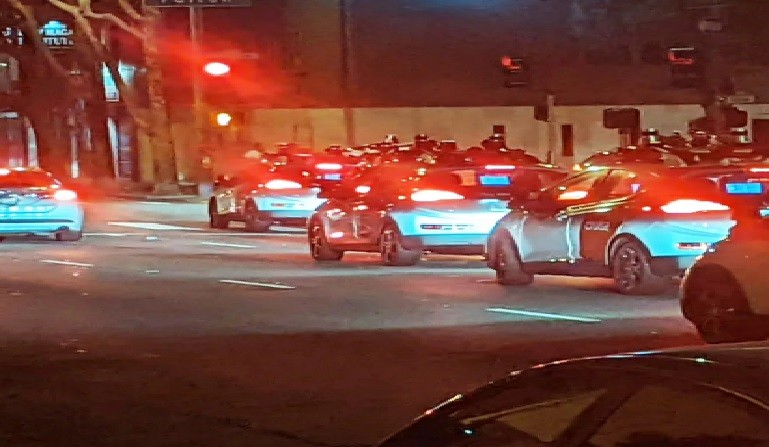
When Cruise Automation’s cars recently began coming to a stop jamming up San Francisco streets senior wireless and automotive executives worldwide began shifting uneasily in their suites. In spite of demanding that General Motors build them an expensive telematics control unit (TCU) with four-carrier (at the time) connectivity, the Cruise vehicles had managed to find a coverage gap – despite operating in the dead of night.
The widespread conclusion is that on June 21 Cruise’s vehicles discovered a wireless dead zone. This is different from the May Cruise system failure which reportedly took all Cruise vehicles offline for 20 minutes.
The shocking development, which tied up traffic and amused native San Franciscans, marked a turning point for the autonomous vehicle industry. Developers of autonomous vehicles – particularly those connected to auto makers, like Cruise (GM) – have long eschewed connectivity, preferring to craft their systems to operate independently of wireless connections.
These executives and engineers might welcome connectivity for software updates or traffic alerts, but they were loathe to create wireless dependencies. In order to deliver an actual robotaxi service, though, operators recognized that a connection was no longer optional.
When General Motors first introduced automotive connectivity in the form of OnStar telematics, the main concern was that wireless connectivity was available in and around GM franchised dealerships. The service needed to be available at dealerships so that service could be activated in new cars. Neither GM nor Cruise ever seriously took up the question of wireless coverage availability and quality.
In retrospect, an observer might imagine that Waymo chose Arizona for its first robotaxi service delivery location because the flat terrain and reliably clear weather would guarantee durable wireless connections. Now, all bets are off.
Connectivity is clearly necessary in order to deliver robotaxi services. Of course, multiple country and state jurisdictions around the world have called for remote teleoperation as a requirement for autonomous vehicle testing and deployment. Cruise’s high-profile failure now raises questions as to whether a requirement for “connectivity” is sufficient. Regulators may soon require satellite connectivity to ensure a more robust vehicle connection – especially in emergency circumstances.
Cruise’s failure was not the only failure to call attention to the potential vulnerabilities of cellular links. Canadian carrier Rogers Communications suffered a 24-hour service outage on July 8th which knocked out all wireless services including 911 and payment networks.
Legislators and regulators in Canada have predictably commenced a round of investigations and Rogers has announced plans to spend $10B on artificial intelligence and testing in response to the failure. Some regulators called for greater cooperation between carriers in the event of future emergencies. Rogers took the added step of replacing its technology chief.
The Rogers and Cruise debacles are worst case scenarios for wireless connectivity. They both highlight the need for greater cooperation between carriers and greater due diligence in deploying and maintaining wireless service.
The onset of 5G practically requires a greater “densification” of wireless networks – i.e. more small cells – in order to reap the full benefits of what 5G has to offer in terms of faster speeds, greater capacity, and lower latency. The dirty little secret of cellular wireless coverage has long been the dead or “white” zones where coverage fails. T-Mobile likes to display a completely magenta-colored map in its advertising in the U.S. and in its stores to portray ubiquitous coverage, but the reality is something different.
Companies from Ericsson and HERE to Ookla, Root Metrics, Umlaut, and Continual have emerged to monitor and manage evolving coverage issues. For auto makers, for which safety systems such as GM’s Super Cruise and the soon-to-be-mandated Intelligent Speed Assistant require connectivity, predictive wireless coverage maps and models have suddenly become a necessity. Vehicles need to be “aware” of when and where they can count on available wireless connections to deliver safe vehicle operation.
The fact that Cruise launched its robotaxi service – after extensive testing – without previously identifying and measuring coverage issues within the challenging urban environment of San Francisco is a shock in and of itself. The result poses catastrophic implications for the concept of deploying robotaxis in cities around the world.
Wireless robotaxi connections will be vulnerable to the effects of urban canyons on wireless connections as well as the demands placed on even the most robust urban wireless networks by massive user populations competing for service. The only solution may be to look skyward to the introduction of satellite connectivity to fill in the gaps within existing wireless network coverage. Politicians, consumers, and investors will not stomach amusing but embarrassing failures such as that suffered by Cruise last month.
Also read:
Ecomotion: Engendering Change in Transportation
Connecting Everything, Everywhere, All at Once
Radiodays Europe: Emotional Keynote
Share this post via:





TSMC N3 Process Technology Wiki